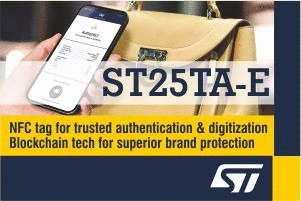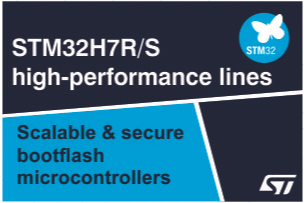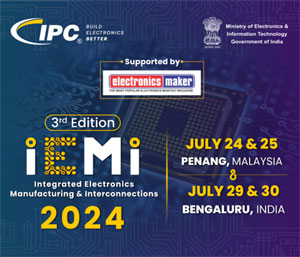
Wirepas has crossed a major milestone with over 5 million smart meter deployments in India, driven by its reliable, self-healing RF mesh technology. In this interview, Ashish Sahay, Country Manager & Sales Director, discusses how Wirepas is enabling scalable, cost-effective solutions for India’s energy sector, supporting the government’s 250 million smart meter goal through local partnerships, flexible models, and continuous innovation.
1. Wirepas has achieved significant milestones in India’s smart metering sector, including surpassing 5 million deployments. What factors have contributed to this success, and how does Wirepas plan to sustain this momentum?
Reaching over 5 million smart meter deployments in India is a major milestone for Wirepas and a clear reflection of the market’s growing trust in our RF mesh technology. Our success has been driven by a few key factors: a scalable and resilient solution tailored to India’s unique conditions, a flexible licensing model that supports the Make in India initiative, and strong partnerships with local manufacturers and AMI providers.
While our initial entry in 2019 saw a slow start, 90% of our deployments have happened in just the last 24 months. Today, Wirepas-enabled meters are being installed at a rate of around 500,000 per month, with expectations to reach 1 million per month during 2025. Our open, non-exclusive approach and proven field performance – especially in demanding regions like Assan, Himachal Pradesh, Uttar Pradesh, Bihar, and Madhya Pradesh – have made Wirepas the preferred choice for AMI providers looking to meet high SLAs and scale fast. We plan to sustain this momentum by continuing to invest in our technology, expanding local collaborations, and supporting India’s ambitious digital grid transformation with a future-ready solution.
2. With India’s ambitious target of installing 250 million smart meters by 2025, how is Wirepas positioning itself to meet this demand, and what challenges do you anticipate in achieving this goal?
India’s goal of deploying 250 million smart meters by 2025 is ambitious, but entirely achievable with the right technology and ecosystem. At Wirepas, we’re fully committed to supporting this vision. Today, our RF mesh technology is used across India through a growing network of local partners. We’ve structured our business model to scale rapidly, licensing our patented technology and transferring designs to Indian manufacturers in full alignment with the Make in India initiative.

Wirepas certified AMI offering secures the interoperability in multivendor scenario. Wirepas is very open ecosystem and any company can license software technology in India market. This way India roll-outs won’t become production limited of the smart meters supporting Wirepas mesh technology.
Our solution is designed to scale seamlessly, delivering real-time data at 15-minute intervals to cloud – or even 5 min for high-consumption meters – while offering the lowest total cost of ownership in the market.
Of course, challenges remain. These include ensuring reliable connectivity across diverse geographies, managing complex deployments at scale, and maintaining high SLA standards. But this is where Wirepas Mesh excels with a decentralized, self-healing network that thrives even in areas with weak or no cellular coverage.
By continuing to invest in performance and partnering closely with Indian stakeholders, Wirepas is well-positioned to lead India’s smart grid transformation, helping utilities meet their goals efficiently, reliably, and at scale.
3. Wirepas Mesh technology boasts a 99.9% reliability rate. Can you elaborate on how this level of reliability is achieved and its significance for Indian utilities and consumers?
Wirepas mesh technology’s impressive 99.9% reliability rate is a result of its unique, decentralized, and self-healing network design. Unlike traditional communication systems that rely on complex infrastructure, Wirepas Mesh is built to be infinitely scalable and ultra-resilient. Each smart meter acts as a mini network base station, connecting with its neighbors to form a robust, self-healing communication network without any single points of failure. This ensures that, even in the most challenging environments – whether rural or densely populated areas – there are no black spots and coverage remains strong and consistent.

This level of reliability is critical for both Indian utilities and consumers. For utilities, it ensures that smart meters are always online, enabling continuous, real-time data flow, which is essential for accurate billing, demand management, and grid optimization. For consumers, it means fewer disruptions in service, better control over energy usage, and more reliable billing. With a proven track record of 99.9% reliability (SLA), Wirepas enables AMI service providers to meet their performance requirements, ultimately driving better returns on investment as more meters stay connected and operational.
Wirepas’ ability to deliver this high level of reliability, without the need for expensive and complex infrastructure, makes it a highly cost-effective solution for utilities, helping them scale quickly and efficiently while maintaining the highest standards of service.
4. Given the diverse geographic and infrastructural landscape of India, how does Wirepas ensure consistent performance of its RF mesh technology across both urban and rural deployments?
Deploying smart metering in India presents significant challenges due to its diverse geographic landscape, limited infrastructure, and connectivity issues. However, Wirepas RF mesh technology has been designed to overcome these obstacles, ensuring consistent performance across both urban and rural areas.
One of the key advantages of Wirepas RF mesh is its ability to self-configure and build coverage dynamically as more meters are deployed, eliminating the need for detailed upfront network planning. This is crucial in India, where many utilities lack comprehensive survey data, and delays are often caused by the need to plan conventional network coverage. Wirepas removes this barrier by allowing the network to grow organically as meters are added, speeding up the roll-out process and providing reliable connectivity even in areas with limited infrastructure.
When deploying Wirepas based RF mesh systems, dedicated DCUs are not required, but one of the smart meters will functioning as an in-meter gateway, sharing one cellular connection up to 300 RF mesh smart meters. This approach makes RF mesh commercially viable even with very small number of smart meters sharing cellular connection in rural areas. Sametime solving any cellular network coverage issues by using RF mesh.
Moreover, the Wirepas RF mesh network does not rely on cellular infrastructure or additional gateway devices, which are often a challenge in remote or densely populated urban areas where connectivity can be spotty. Each smart meter in the network acts as a mini base station, improving coverage and resilience, and ensuring reliable communication even in areas with power and connectivity disruptions.
By working closely with AMI service providers (AMISPs) and aligning with India’s RDSS and SBD compliance requirements, Wirepas has demonstrated that these ambitious standards can be met, even under the toughest conditions. The flexibility and scalability of Wirepas Mesh make it the ideal solution for ensuring consistent, high-quality performance across India’s diverse and complex environments.
5. Collaborations have been pivotal for Wirepas, such as the partnership with Silicon Labs resulting in the shipment of four million FG23 SoCs for India’s AMI. How do such partnerships enhance Wirepas’ offerings in the Indian market?
Collaborations have been instrumental in helping Wirepas scale and enhance its offerings in the Indian market. Our partnership with Silicon Labs, for example, has significantly strengthened our presence in the country, particularly with the shipment of four million FG23 SoCs for India’s Advanced Metering Infrastructure (AMI). This collaboration has allowed us to leverage Silicon Labs’ industry-leading long range sub-GHz RF transceivers, combining their top-performing wireless components with Wirepas’ Mesh technology. This has enabled us to provide highly reliable, long-range communication solutions tailored for the demanding requirements of smart metering in India.
Through such partnerships, Wirepas can ensure that utilities receive not only a technically superior solution but one that is also aligned with India’s regulatory and operational requirements. By working closely with local metering manufacturers, system integrators, and utility providers, we can maximize the flexibility and openness of our RF mesh technology. This allows us to collaborate with a broad network of partners, ensuring that AMISPs can choose the best-suited communication methods, meter manufacturers, and deployment models for their specific needs.
Moreover, partnerships enable us to deliver end-to-end AMI solutions, integrating smart meters, communication networks, and meter data management systems. Wirepas works hand-in-hand with these partners to help AMISPs meet SLAs of 99.9% coverage and performance, which is essential for the successful deployment of smart metering systems in India. By leveraging the strength of these collaborations, we can ensure that our technology provides the performance, scalability, and cost-efficiency required to meet the growing demands of India’s smart metering market.
In summary, these partnerships amplify the value Wirepas can offer to the Indian market, helping us stay at the forefront of innovation and enabling large-scale, reliable smart metering rollouts that meet both technical and regulatory standards.
6. In regions with minimal electricity consumption, many users frequently top up small amounts to their prepaid accounts. How does Wirepas Mesh technology handle the high volume of connect and disconnect commands efficiently in such scenarios?
Wirepas Mesh handles high volumes of connect and disconnect commands efficiently by utilizing its decentralized, self-healing network. Each smart meter acts as a mini base station, improving coverage and ensuring reliable communication even in remote areas. The technology dynamically reroutes data in real-time, minimizing latency and ensuring seamless processing of frequent small-scale transactions.
In collaboration with Anvil, which introduced India’s first cloud-based prepaid system, Wirepas Mesh has further enhanced its ability to manage prepaid metering efficiently. This collaboration enables quick, real-time processing of connect and disconnect commands, even during peak top-up periods. By eliminating the need for complex infrastructure, Wirepas ensures utilities can deliver reliable service with minimal cost, even in regions with minimal electricity consumption.
7. Beyond smart metering, are there other sectors in India where Wirepas sees potential for its mesh technology, and what initiatives are being undertaken to explore these opportunities?
Wirepas sees significant potential for its mesh technology beyond smart metering, particularly in sectors such as smart buildings, industrial IoT and asset tracking. The flexibility, scalability, and reliability of Wirepas Mesh make it ideal for applications like environmental monitoring and connected infrastructure, where robust, low-power connectivity is crucial.
8. Looking ahead, what innovations or advancements can we expect from Wirepas to further revolutionize IoT connectivity in India’s energy sector?
Wirepas RF mesh technology is designed to support even higher data collection intervals. When utilities require more frequent data collection, Wirepas-based networks are fully capable of meeting those needs.
Wirepas is also helping its customers prepare for cellular technology sunset scenarios. When cellular connectivity becomes obsolete in in-meter gateway smart meters, those meters can continue sending data over the mesh network. In such cases, only one out of every 300 smart meters would need to be upgraded with a new in-meter gateway NIC using the latest cellular technology. Alternatively, if replacing the smart meter is not necessary, any existing NIC can simply be updated with the newer in-meter gateway NIC. This eliminates the need to revisit every smart meter, as would be required with purely cellular solutions.
Wirepas in-meter gateways also support multi-SIM functionality, giving AMI service providers full flexibility to select operators and maximize network coverage.
Together with AMI service providers and utilities, we continue to innovate and adapt – learning from the market and shaping solutions that meet its evolving needs.






